At the bottom of Vân Phong Bay, there are thousands of creatures, many of which have strange shapes and vibrant colors.
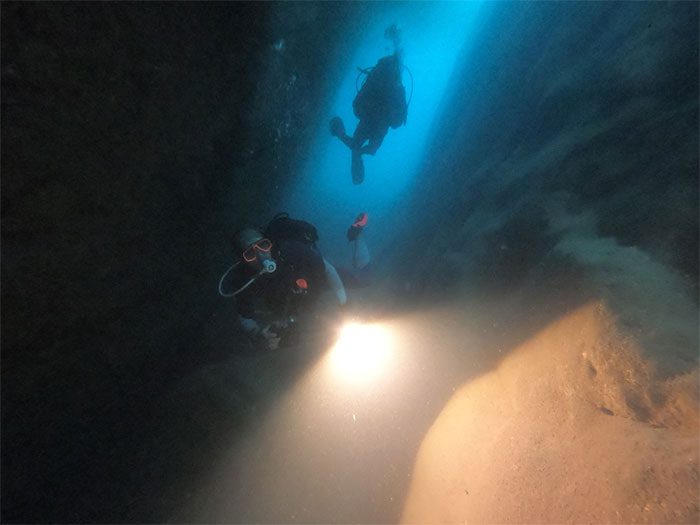
For many years, Mai Hoàng Kiên Kha, a diving instructor with over 20 years of experience in Nha Trang, has explored the bays in Khánh Hòa with students and colleagues. During one exploration of Vân Phong Bay, he was surprised to see the incredible diversity of life beneath the surface. “The bay is home to many strange creatures, surrounded by coral reefs stretching for miles, mostly soft-bodied and looking pristine and very beautiful,” Kha said, adding that while the area is rich in biodiversity, the water is less clear than in Nha Trang due to the muddy bottom and high levels of plankton.
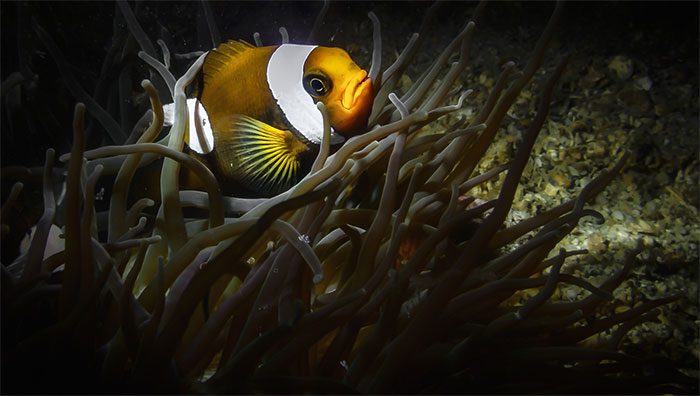
Clownfish live symbiotically in the “homes” of sea anemones at depths greater than 15 meters. They often use some of the nutrients from the anemone’s tentacles and share food sources; in return, the anemones use their stinging tentacles as a “weapon” against predators.

Clownfish eggs hatch into hundreds of tiny, rare offspring. Kha expressed that he felt “very lucky” to witness this special moment.
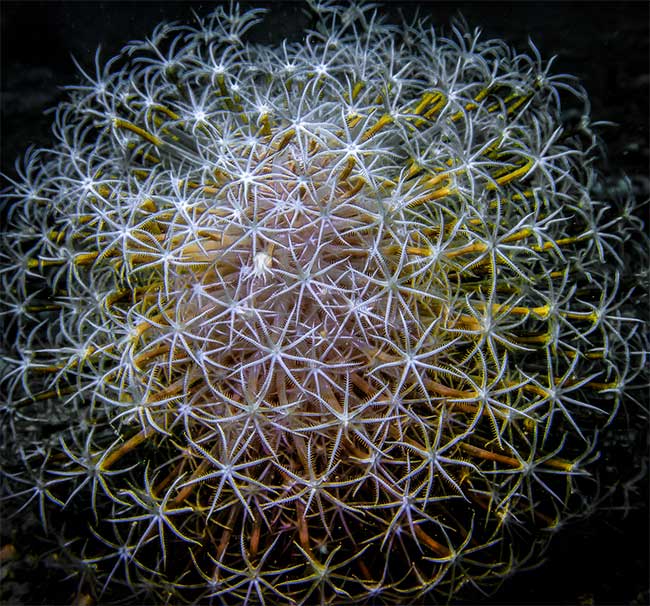
A type of sea anemone with wide branches, forming a dome shape at the bottom of Nha Trang Bay.
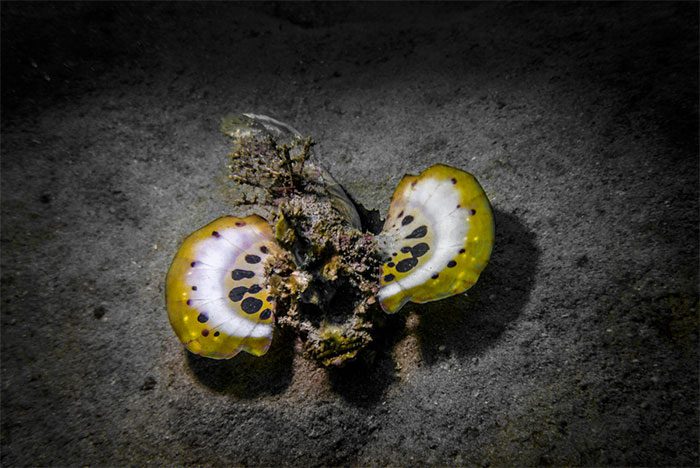
Devil Scorpionfish, scientifically known as Scorpaenopsis diabolus, is a carnivorous and venomous species. They often camouflage themselves on the seabed to catch prey. “They have spines on their backs; if divers are not careful and touch them, it can be quite painful,” Kha explained.
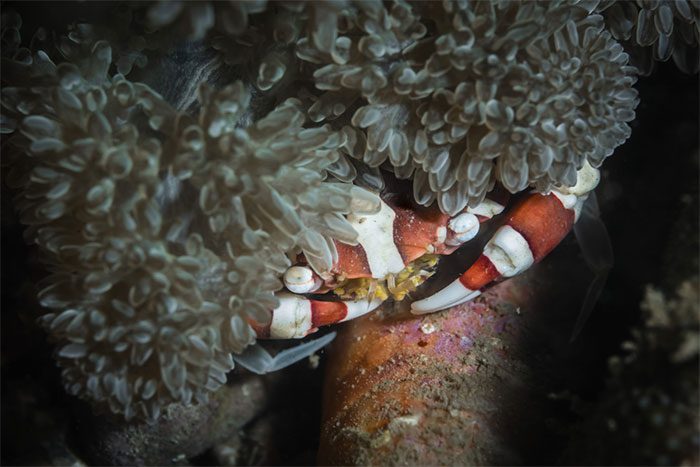
A species of crab scientifically named Lissocarcinus orbicularis. They often hide in sea anemones to escape predators.
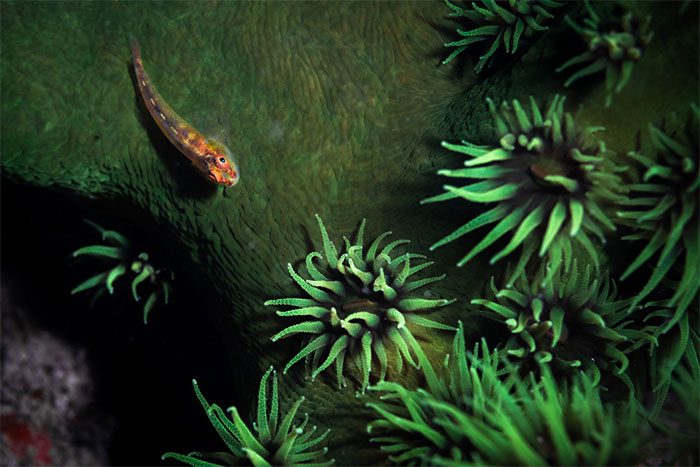
A fish belonging to the Gobiidae family. They primarily inhabit the seabed and are predominantly found in tropical waters, laying eggs on the bottom and in crevices. This species can tolerate significant variations in salinity and has the ability to change color to match their environment, primarily feeding on bottom-dwelling larvae.
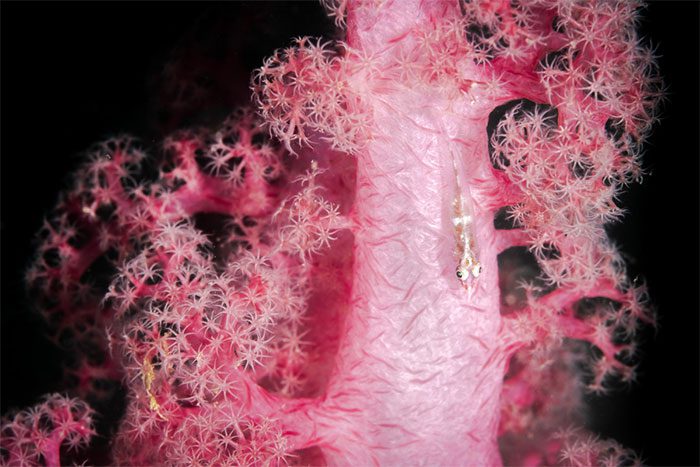
Red soft coral branch. Above it, a line of Gobiidae fish is feeding. The total area of coral reefs in Vân Phong Bay is approximately 1,618 hectares, the largest in Khánh Hòa. Notable areas include Vũng Ké (113 ha), Hòn Bịp (107 ha), and Xuân Tự (240 ha).

Peppermint Shrimp, scientifically known as Lysmata wurdemanni, are found near coral reefs as they are a great source of food and a good hiding spot. They typically eat scraps, decaying fish tissue, and decomposing organic matter.

Small Cuttlefish – a mollusk belonging to the class Cephalopoda. Cuttlefish have a large external shell, a W-shaped pupil, eight arms, and two tentacles with serrated suckers to grasp their prey. They range in size from 15 cm to 25 cm, with the largest species, Sepia apama, reaching a mantle length of 50 cm and weighing over 10.5 kg.

A type of fish Spotfin Sculpin, measuring approximately 12-15 cm. According to research, the coral reefs of Vân Phong Bay host 998 species belonging to 648 genera and 175 families across six main groups of reef organisms (hard corals, reef fish, mollusks, crustaceans, echinoderms, and polychaete worms).
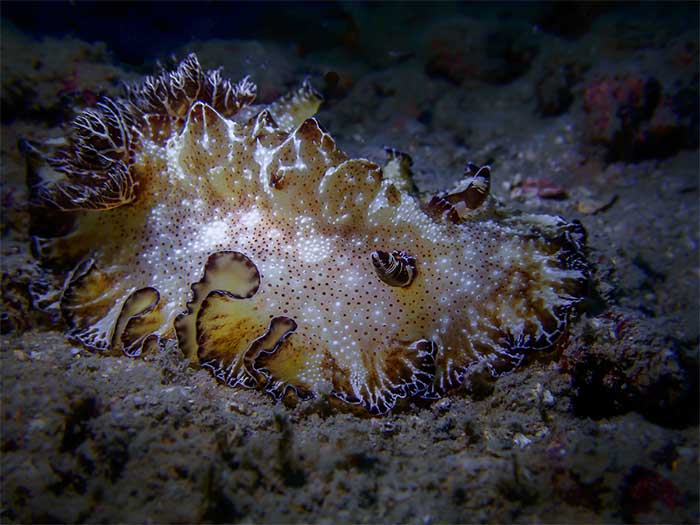
A type of sea slug, scientifically known as Nudibranch, is an invertebrate with a wide range of sizes, shapes, and colors. This hermaphroditic species has a lifespan ranging from a few weeks to several years. They are omnivorous, with a diet primarily consisting of algae, sponges, sea anemones, corals, and even some other sea slugs.
Vân Phong Bay, located in Vạn Ninh District and Ninh Hòa Town, offers favorable natural conditions, including coral reefs, mangrove forests, seagrass beds, and various seafood, making it one of the areas with high biodiversity potential.


















































